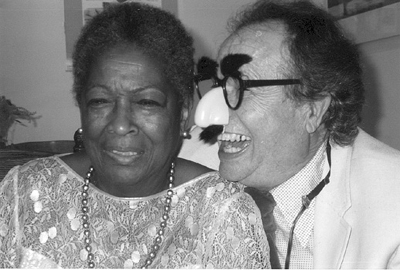I was fascinated by filmmaker Larry Hott’s post about how online streaming of filmmakers’ content has the potential to upend traditional models of documentary filmmaking, fundraising, and distribution. Since my own interaction with Massachusetts filmmakers tends to focus on the artistic content of their work, the post made me wonder about the ramifications of vodcasting on the art – on the film content itself.
I coordinate Artist Fellowships for Film & Video artists at the Massachusetts Cultural Council, and occasionally, the filmmakers the MCC funds or honors based on artistic excellence also pitch projects to Mass Humanities, because their work has potential for public dialogue and humanities explorations.
 Take the film At Home in Utopia (click to see a short excerpt). In 2007, we awarded the film’s director, Michal Goldman an Artist Fellowship in Film & Video, based solely on the artistic quality of her documentary about a labor housing cooperative in the Bronx. Through Filmmakers Collaborative, Michal applied for and received a Mass Humanities Liberty and Justice For All project grant for programs focusing on housing as an issue of social and economic justice built around the film.
Take the film At Home in Utopia (click to see a short excerpt). In 2007, we awarded the film’s director, Michal Goldman an Artist Fellowship in Film & Video, based solely on the artistic quality of her documentary about a labor housing cooperative in the Bronx. Through Filmmakers Collaborative, Michal applied for and received a Mass Humanities Liberty and Justice For All project grant for programs focusing on housing as an issue of social and economic justice built around the film.
Other filmmakers who have received funding or honors from both the MCC and Mass Humanities have followed a similar pattern: Jim Wolpaw and Steve Gentile received an Artist Fellowship for their unorthodox Emily Dickinson documentary Loaded Gun; Mass Humanities helped fund scholarly discussions at screenings. Julie Mallozzi was an MCC finalist; her film Monkey Dance has received both pre-production and distribution funds from Mass Humanities to, among other things, help subsidize a teacher’s guide to the film.
In most cases, the film was a finished work of art that provided the basis upon which humanities programs were built. But Larry Hott’s own experience of showing shorter excerpts from his unfinished film, online, made me wonder where these kinds of crossovers are headed. Will we see filmmakers’ content becoming more fluid, with portions of the film repurposed into interactive experiences? Will the model of a finished film as launching point give way to a model where film content is ever-changing and can be redirected and focused to suit educational experiences?
No doubt, much of this is already happening (it seems an interesting, if at times bewildering, moment to be an independent filmmaker). I wonder what the effect will be on the actual making. Is this shift likely to change the way filmmakers create their work? Or is it a more organic outcropping of the way their work is already made?
Image: “Boris and Libby Ourlicht,” still from At Home in Utopia. Image courtesy of Michal Goldman.


